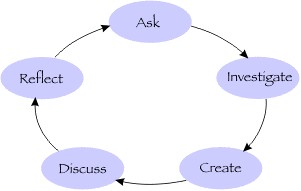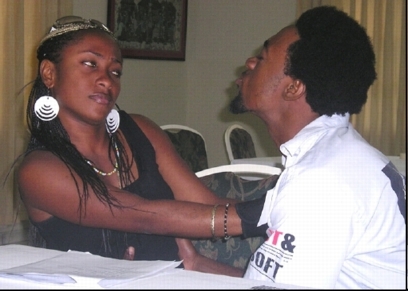Discussion:
In order to overcome the limitations listed above, the idea that public facilities might be established within communities is now fairly commonplace around the world (Menou 2003). Modern public access points to ICT are often referred to as "telecenters" even though their origins, ownership, purposes and modes of operation are so diverse that the development of a typology of public access points might be justifed, so that the commonalities and differences might be understood (Menou & Stoll 2003b).
Telecentres first emerged in Scandinavia and the UK during the 1980s and early 1990 and were known as telecottages, telehus, teleservice centers and electronic village Halls (Day, 1996 a&b) while the first "Community Computer Center" in the US was established in 1981 in the basement of a housing project in Harlem (New York City) (Schuler, 1996). Intended to provide public access to computing technology, these initiatives were either run as community development projects, commercial ventures or a bit of both (Day, 2001; Day & Harris, 1997). In the so-called "developing countries" one might distinguish 3 main avenues that the development of telecenters took. Most publicized is "pilot projects" initiated by international development agencies such as UNESCO, World Bank, IDRC, USAID, etc., which resulted in the implantation of isolated facilities with limited involvment of the communities at the beginning, e.g. Timbuctu in Mali, Kothmale in Sri Lanka. Another line is government programs pretending to overcome the "digital divide" by the implantation of a large number of telecenters in "undepriviledged" communities (e.g. @Argentina) with the same drawbacks of a top down approach, no networking plus bureaucratic constraints. A third line combines individual initiatives by grass root NGOs in particular locales and a franchising model developed by the Red Cientifica Peruana in Peru, known as "Cabinas Publicas Internet" which entertained ambiguities between community service and small business development.
Today the variety of public ICT access points (or PIAPs) and the nature of their roles is more wide-ranging and can be distinguished according to:
- their origin, ranging from ad hoc initiative of an individual to national and international programs;
- their purpose, ranging from profit of business owners - e.g. cyber or internet cafés - to free support to community development endeavors - e.g. true community telecenters;
- their ownership, ranging from individual small entrepreneurs to community groups, local and central government entities;
- the community participation in their governance, ranging from nil to full control;
- the mix of ICT available, ranging from only one, e.g. public phone booths, to all (e.g. phone, fax, internet, radio, web TV, etc.);
- the variety of services offered ranging from independant use of ICT to a wide mix of economic, social, educational and cultural activities;
- whether they stand alone or are part of a more or less extensive network
True community telecenters are part of the efforts undertaken by community members to build community and improve community conditions; they utilise ICT as a means, among others, that facilitate the attainment of these objectives (Menou & Stoll, 2003a). The centers are designed and managed with full participation of the community (Roessner 2005). Non- community telecenters are only concerned with providing access to ICT at an affordable cost to people who are deprived from it, whether temporarily or permanently. For the remainder of this pattern we focus exclusively on community telecenters.
Community telecenters typically get started via two main avenues:
1) They are the brain child of interested individuals or grass root community groups who champion their development and implementation through various community strategies and actions; or
2) They form part of a top down (usually government or international agency) program purporting to bridge the "digital divide".
Telecenters face a variety of problems and challenges that can be categorized as either social, political, economic, or technical.
In the social realm the key issues are:
- the relevance of the telecenter and ICT use as a means to support the various development efforts undertaken by the community
- the appropriateness of its role, the social interaction it permits and the information it makes available, especially with regard to cultural and gender biases
- the availability of people with required skills to operate and manage the telecenter and provide training and support to the users
- the level of information and computer literacy in the community and the availability of intermediaries to offset their deficiency
- the availability and accessibility of local information.
In the political realm, key issues are:
- the degree of ownership that the community might have from the inception, or progressively reach;
- the level and continuity of community involvement in the management of the telecenter
- the support of, or conversely conflict with, local and national authorities and pressure groups
- the relationship with national programs in the area of universalization of telecommunications services and digital inclusion, and the ability of the telecenters to preserve their identity and autonomy though participating as appropriate in such programs;
- the attitude of telecommunication companies vis a vis competition, universalization and digital inclusion efforts.
In the economic realm, key issues are:
- funding for initial investments
- securing regular income streams that can can support the operation of the telecenter
- securing resources for the maintenance and renewal of the equipment
- offering employment conditions that are attractive enough for retaining the permanent staff
In the technological realm, key issues are:
- reliability and cost of power supply
- reliability and cost of telecommunications
- reliability and cost of access to the international internet backbones
- ability to implement a distributed network
- capability of operating FOSS applications
- capability of deploying media integration, in particular radio
In many countries central governments have funding programs to encourage the development of "telecenters". Significant financial backing from international organizations is also commonplace and support is also often available from local governements.
Telecenter associations have been set up and are seeking to establish their influence at the local level as well as forming broader groups at regional and international levels. These structures are powerful instruments for sharing knowledge and experiences, helping each other and consolidating the movement Menou, Delgadillo Poepsel & Stoll 2004). Such grass root organizations should not be confused with a number of top down portals and support schemes that pretend to represent telecenters and disseminate second hand knowledge for sake of specific political and commercial interests
Mirroring events from the 1980s & 90s when computers were parachuted into communities as part of top down development programmes, the current crop of telecentres face similar challenges of social, financial and technological sustainability. At that time telecottages and electronic village halls (EVHs) were very much flavor of the month among government and funding agencies (Day, 2001; Day & Harris, 1997). However, they were viewed as short-term project that were expected to achieve sustainability with no support or training. Some transformed themselves into small commercial ventures but most closed eventually leaving behind them a great deal of frustration and dissillusionment in the community.
Very few lessons from that period appear to have be learnt. In the UK, the UK Online Centre programme, some 10 years or so after the initial telecottages and EVHs closed, many of the UK Online centres have closed or are closing after massive amounts of public funds had been pumped into them. Across the globe, the present tranche of telecenters seem to be following a very similar pattern of contradictory trends. On the one hand they are recognized by governments and international agencies as key instruments for achieving digital inclusion. Thus a proliferation of funding programs to support their establishment has been witnessed in recent years. On the other hand the support currently being displayed has no long-term policy substance behind it and may not resist the medium term hazards of development endeavors. The pressure toward securing financial sustainability in the short-term - usually 3 to 4 years - may indeed push many telecenters to close or attempt to reinvent themselves as business enterprises wherever this is feasible despite the fact that by definition they serve a population which does not have a level of income sufficient for paying for non essential goods and services. Similar attempts in the UK and Scandinavia have historically proved fruitless and we hold out little hope for the future of most telecenters without significant changes being made to policy and funding strategies.
Examples
Asodigua, Guatemala: http://www.asodigua.org
SAMPA.org, Brazil: http://www.sampa.org
Container Project, Jamaica: http://www.container-project.net












